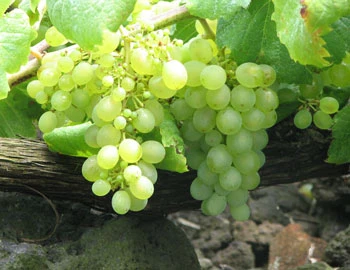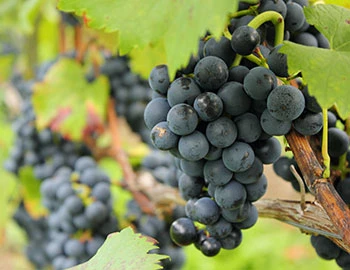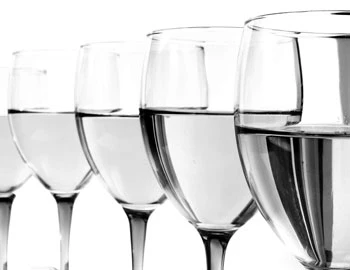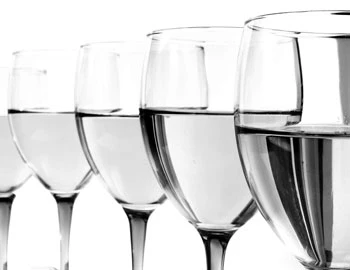Passagem white wine Reserva 2021
DOC Douro, Quinta das Bandeiras, 750 ml

| Grape variety: | Viosinho, Gouveio, Rabigato, Malvasia, Códega do Larinho |
| Producer: | Quinta das Bandeiras / Fam. Bergqvist |
| Origin: | Portugal / Douro |
Description
On the Douro Superior, on the border with Spain, the vines thrive in the mixed Portugal for this full-bodied white Douro Reserva. Reserva. The Passagem presents itself intensely and powerfully in its aroma and with an impressive structure. The spiciness, mineral mineral tartness as well as the diversity of the floral aromas come after a while of aeration in the glass. Flint, white pepper white pepper, ripe peach, grapefruit and orange peel, jasmine and magnolias jasmine and magnolia alternate in the alternate. On the palate, it is creamy, dense and has a modern style. Its complex range of aromas lingers on the palate for a long time. The Quinta das Bandeiras is basically the Douro Superior wine of the Quinta de La Rosa. Bandeiras is located opposite Vale Meão in the Douro Superior. The property (100 hectares) was bought in 2005 by the family of Bergqvist family. It is a joint venture with the renowned oenologist Jorge Moreira.
Attributes
| Origin: | Portugal / Douro |
| Grape variety: | Viosinho, Gouveio, Rabigato, Malvasia, Códega do Larinho |
| Label: | Vegan |
| Ripening potential: | 2 to 10 years |
| Drinking temperature: | 10 to 12 °C |
| Food Pairing: | Italian antipasti, Grilled fish, Whole baked fish, Spicy hard cheese |
| Vinification: | fully destemmed, (short) pellicular fermentation |
| Harvest: | hand-picking |
| Maturation: | in used barriques |
| Bottling: | filtration |
| Volume: | 12.5 % |
| Note: | Contains sulphites |
Quinta das Bandeiras / Fam. Bergqvist
Gouveio
The stranger stong in alcohol
This white grape variety hails from Portugal, where it is planted on around 2,500 hectares. Interestingly, this grape is virtually unknown outside of Spain, yet is also found on the Crimean Peninsula and in the Ukraine. Gouveio is represented in Australia, as well, where it is planted on around 200 hectares.
The grapes provide rich wines and present a moderate acidity, so Gouveio is often used in the production of white port and Madeira wines.

Gouveio
The stranger stong in alcohol
This white grape variety hails from Portugal, where it is planted on around 2,500 hectares. Interestingly, this grape is virtually unknown outside of Spain, yet is also found on the Crimean Peninsula and in the Ukraine. Gouveio is represented in Australia, as well, where it is planted on around 200 hectares.
The grapes provide rich wines and present a moderate acidity, so Gouveio is often used in the production of white port and Madeira wines.

Malvasia
A hint of smoke
Lively citrus aromas and a touch of smoke are the hallmarks of the southern French Bourboulenc. It is also known as Clairette blanche or Malvoisie. This white wine grape is almost never produced solo. Instead, it lends its freshness to the white Châteauneuf-du-Pape and many other assemblages in southern France. Its origins lie in the Vaucluse Plateau in Provence. It turns out particularly delightfully in the massif of La Clapa in Languedoc, directly on the Mediterranean. There, the wines from Malvoisie acquire a salty-iodine note.

Viosinho
Loved from Alentejo to the Azores
This ancient, northern Portuguese white wine variety with pronounced acidity has very few references in the literature. It was first mentioned in 1822, albeit under a different name. The first citation using the name Viosinho dates from 1900.
According to DNA analysis, this vine is related to the Lado, Tinta Francisca, and Tinta Cão varieties.
This early-ripening grape is uncomplicated and robust. It yields aromatic white wines with pronounced acidity and potential for aging. Viosinho is often also referred to as “Portuguese Sauvignon Blanc.”
It is mainly grown in the Douro, Peninsula de Setubal, Tejo and Tras-os-Montes regions, as well as in the Alentejo and the Azores.

Códega do Larinho
Protected by the UNESCO
This autochthonous white grape variety originates in Portugal, its sole growing area. It is primarily cultivated in the Douro region in the north of the country, one of the oldest wine regions protected by UNESCO. It is cultivated across an area of over 600 hectares. The vines grow mostly on steep terraces, carved into the bare slate ground. The productive vines produce rather low-acidity white wines with aromas of tropical fruits. The grapes are usually blended with other varieties.

Rabigato
The widepread wild white
This white grape variety likely got its name from its native village in Portugal, Rabigato. However, it could also be an allusion to the appearance of the grape clusters, as their shape is reminiscent of a cat’s tail (“Rabo de Gato”).
Rabigato was first mentioned in writing in 1531. Today, it is cultivated on over 2,000 hectares in Portugal.
The berries provide alcohol-rich wines with pronounced acidity, which is why Rabigato is often used in the production of port wine.

Douro
Douro: from port wine to cult wine
For centuries, the legendary reputation of the Douro valley has rested on port wine. By 1970, the five best had been selected from dozens of long-established varieties to be grown on a large scale. Simultaneously, the Douro vintners created the conditions that today allow them to conquer export markets with concentrated and fruity red wines along with port wines. The unique terraced vineyards along the Douro were declared a UNESCO World Heritage Site in 2001.

Portugal
Portugal – Much more than port
Situated on the southwestern tip of Europe, this country is, despite its small size, blessed with a multitude of landscapes. Austere mountains alternate with green valleys and golden beaches. Vines have thrived against this backdrop for over 4,000 years, brought to the peninsula by Phoenicians, Greeks, and Romans.
Portugal has over 500 autochthonous varieties. The term derives from ancient Greek, and means roughly “of the land itself.”




